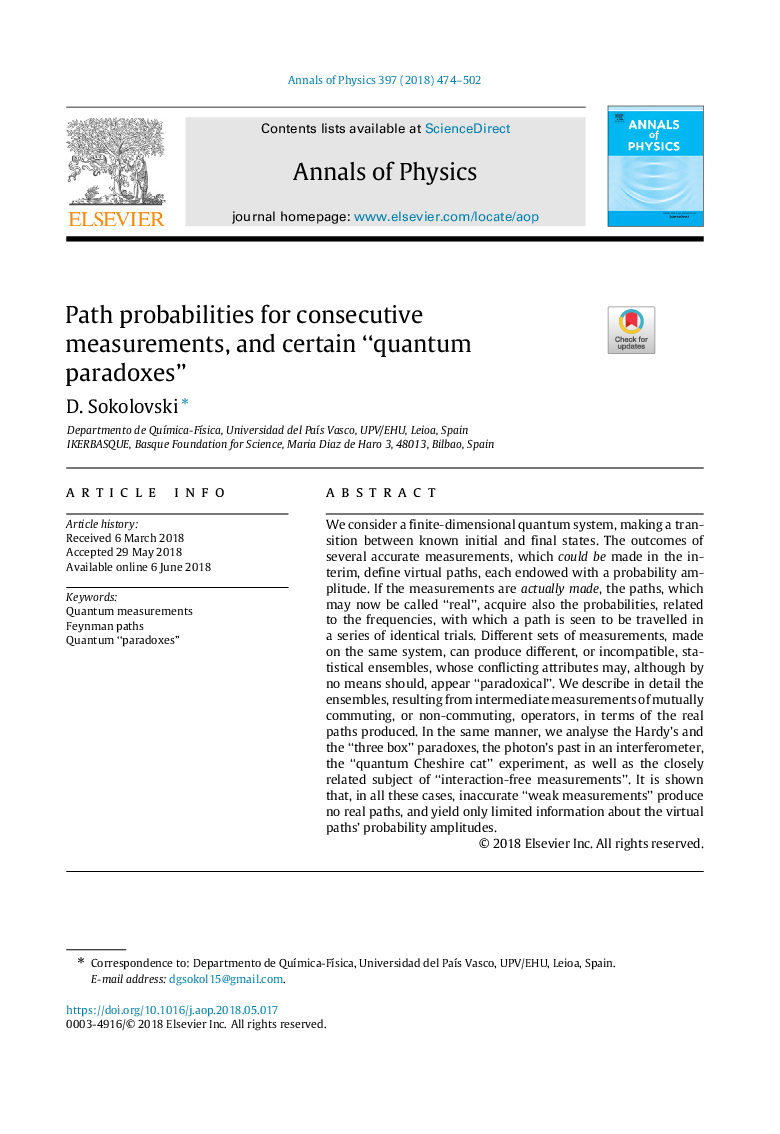| Article ID | Journal | Published Year | Pages | File Type |
|---|---|---|---|---|
| 11032084 | Annals of Physics | 2018 | 29 Pages |
Abstract
We consider a finite-dimensional quantum system, making a transition between known initial and final states. The outcomes of several accurate measurements, which could be made in the interim, define virtual paths, each endowed with a probability amplitude. If the measurements are actually made, the paths, which may now be called “real”, acquire also the probabilities, related to the frequencies, with which a path is seen to be travelled in a series of identical trials. Different sets of measurements, made on the same system, can produce different, or incompatible, statistical ensembles, whose conflicting attributes may, although by no means should, appear “paradoxical”. We describe in detail the ensembles, resulting from intermediate measurements of mutually commuting, or non-commuting, operators, in terms of the real paths produced. In the same manner, we analyse the Hardy's and the “three box” paradoxes, the photon's past in an interferometer, the “quantum Cheshire cat” experiment, as well as the closely related subject of “interaction-free measurements”. It is shown that, in all these cases, inaccurate “weak measurements” produce no real paths, and yield only limited information about the virtual paths' probability amplitudes.
Keywords
Related Topics
Physical Sciences and Engineering
Physics and Astronomy
Physics and Astronomy (General)
Authors
D. Sokolovski,
